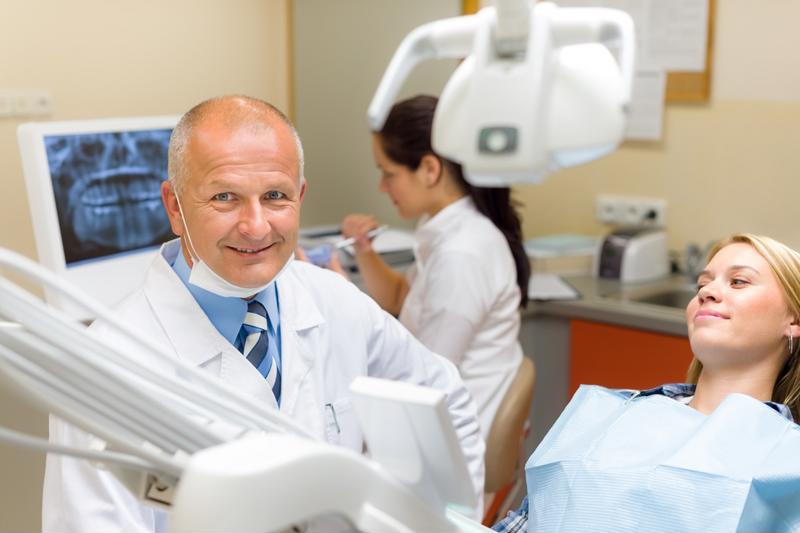While you may not do the same exact things every day, what you do use every day are your teeth. Be it for smiling, chewing or speaking, your pearly whites are highly important, and require ongoing attention beyond simply brushing, flossing and gargling with mouthwash. That’s why your dentist highly recommends you come in at least twice a year for a professional cleaning.
But routine checkups don’t just help keep your teeth shining and stronger for longer. They can also help stretch your dollar further. This is made possible by dramatically reducing the required treatment and long-term health costs associated with poor oral hygiene.
Tooth decay
Tooth decay may be the best example of all as to what can happen when you don’t care for your teeth properly. Otherwise known as dental caries, tooth decay is no ordinary health ailment that affects only a certain percentage of New Zealanders or the world at large. According to the World Health Organisation, tooth decay afflicts 3.5 billion people globally. This makes it the most common health condition there is, more ubiquitous than even cardiovascular disease. More than half a billion of those who have tooth decay are young children.
Aside from the fact that tooth decay can lead to severe pain and discomfort, it can be very expensive to treat, depending on a variety of factors related to the condition itself and the patient’s age. Even in advanced economies, where the quality of health care is better and more readily available, the cost to treat such oral health conditions averages 5% of overall health expenditures, according to the World Health Organisation. And when not including insurance, which can defray some of out-of-pocket expenses, tooth decay accounts for 20% of what nations spend on health care for its citizens.
While basic dental services are free until you’re 18 in New Zealand, it’s a different story for adults, especially in instances where decay is severe.
The key to avoiding the expensive, long-lasting side effects of tooth decay is to catch it early. Even if your next visit results in a filling, it’s a lot better than the alternative, such as needing a tooth or teeth extracted.
 Seeing the dentist for your biannual checkup is as important as your annual physical.
Seeing the dentist for your biannual checkup is as important as your annual physical.Root canal
When a tooth is routinely painful — where it hurts to chew or is sensitive to hot and cold foods or beverages — a root canal may be necessary. As stated here previously, a root canal is a last ditch attempt to preserve a tooth’s structural integrity by eliminating inflamed pulp, which is the material that lies within the protective outer surfaces of the teeth. While root canals are often associated with pain, improved treatment therapies, in combination with Novocaine, help to minimise discomfort during the procedure. Given this, it’s better from a sheer comfort perspective to get a root canal today than it was as recently as 15 to 20 years ago.
What hasn’t notably changed is the cost. The treatment can cost hundreds of dollars and may not be covered by your dental insurance policy. Depending on your plan, it may require that you pay for a certain percentage of the surgery (or all of the cost) out of pocket.
Again, the severity of the issue often dictates the cost, so even if you do require a root canal, having it done earlier than later can save you money. Even better, your dentist may be able to provide you with tips and how to avoid a root canal if there are signs suggesting you may need one if certain corrective actions aren’t taken. It may be as simple as adjusting the manner in which you floss.
Oral cancer
Like many other cancers, the mortality rate for a variety of oral cancers has diminished, but it remains one of the most commonly diagnosed cancers in the world. For instance, according to the World Cancer Research Fund, salivary gland cancer is 28th on the list and oral cavity cancer is 21st. On a percentage per capita basis (1 diagnosis for every 100,000 people), only six other countries see more oral cancer diagnoses every year than Australia. By and large, oral cancer is highly prevalent in Southeast Asia.
Treatment for oral cancer is also highly expensive. And once again, the cancer stage and the type of oral cancer can all affect the price. But it can easily cost in the hundreds of thousands of dollars, especially when including post-operative care.
For the sake of your long-term health — as well as your wallet’s — schedule an appointment with your dentist to have your teeth cleaned. Don’t put it off another day. If you’re currently looking for a new dentist or you’re new to New Zealand, make City Dentists your new home for your teeth’s well-being. Our offices are located in Wellington. We look forward to seeing your smiling face. Book yourself an appointment today.
